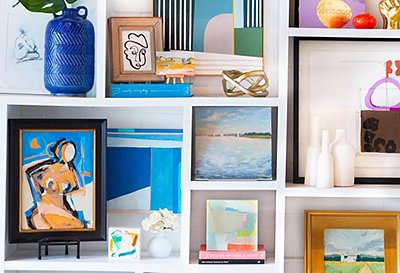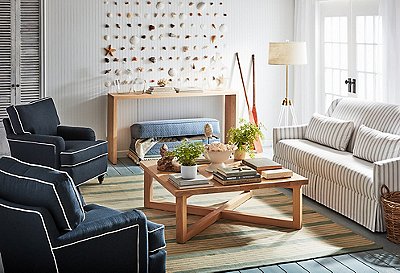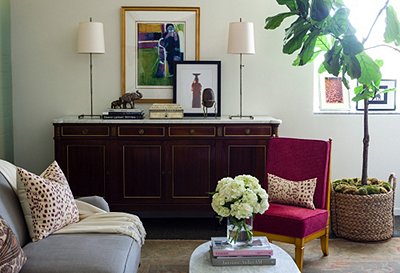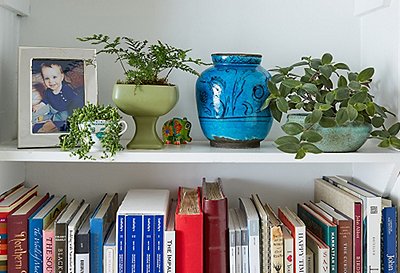With the internet allowing consumers to pore over Pinterest boards, chat with tastemakers on Instagram, and comparison-shop for everything from doorknobs to antique urns, some question the value of working with a professional designer at all. Others are skeptical regarding what designers do to warrant their fees, seeing them as little more than sounding boards and product procurers. While this certainly makes the job of an interior designer much more challenging, you can transform the challenge into an opportunity. That was the theme of “A Look at Design’s Next Generation,” a panel discussion held at the showroom of custom furniture manufacturer A. Rudin at Manhattan’s Decoration & Design Building (DDB) on April 19.
“The client has so much opportunity to search for everything they want, and it creates a different dynamic,” said panelist Alessandra Santopietro, of Santopietro Interiors. “Having more choices at your fingertips doesn’t always equal the best decisions.”

I have to show them that the whole is more than the sum of their objects.
Educating potential and current clients as to how you as a professional can guide them toward the best decisions is perhaps your best opportunity to prove the worth of your expertise—and your fee. “Their reference points have become ‘Send me a link; I’ll tell you if I like it,’” said designer and fellow panelist Ryan Lawson. “That brings some pressure to me in my design process. I have to get them to slow down and realize these are investments they’re making; they have to do more than think of it as a collection of objects. I have to show them that the whole is more than the sum of their objects.”
At the same time, “you need to validate your expertise in a storytelling way,” panelist Chad Stark, senior vice president of Stark Carpet, said.
For instance, when a client wonders why she should pay $10,000 and wait three months for a handwoven rug when she can order a seemingly similar rug online for a fraction of the price and receive it in a week, you need to explain how the craftsmanship and materials of the former are worth the investment, especially given that it will last decades longer than the cheaper, lower-quality alternative.

You need to validate your expertise in a storytelling way
And you might also want to point out some of the aesthetic features that make the rug you selected a better choice for the client’s room than the one she choose: Are the colors more subtle? Is the pattern more likely to complement rather than distract from the client’s art?
“It’s all about education,” said A. Rudin co-owner Spencer Rudin. “I have to continually preach that a room is a bespoke product, like a bespoke suit.”
For instance, when a client wonders why she should pay $10,000 and wait three months for a handwoven rug when she can order a seemingly similar rug online for a fraction of the price and receive it in a week, you need to explain how the craftsmanship and materials of the former are worth the investment, especially given that it will last decades longer than the cheaper, lower-quality alternative.
Whereas clients of past generations may have accepted their designers’ recommendations with little or no questioning, today’s consumers view this sort of education as their right—thanks again to the democratic tendencies of the web. But while Lawson emphasized that “the more educated the client, the better the end result,” some clients may feel that you’ve educated them enough to allow them to “graduate” into bypassing you when making purchases.

It’s all about education. I have to continually preach that a room is a bespoke product, like a bespoke suit.
Lawson discussed how, after he took certain clients to his favorite antiques houses to source products, they subsequently returned there without him, making purchases on their own, then showed him the items. “I told them they still owed me a commission,” Lawson said, because were it not for his educating the clients on what to look for and where to find it, they would not have bought the item.
Similarly, “they can find pieces, but then they want you to take care of all the details of getting it there,” Santopietro said. Not only do you need to bill for that as well, but you should also inform the client of everything that entails, as another way of validating your expertise and your fee.
This is probably a more effective tactic than one cited by an audience member: including in the contract the proviso that if the client makes a purchase without the designer, the contract and the relationship are null and void. Though other audience members gasped or laughed (or both) at this approach, it did direct the panel discussion to the importance of being clear with clients from the get-go about the terms of your working relationship, including what is included in your fees and what your services do and do not entail. Being transparent in this way provides you with yet another opportunity to educate your client as to the value of what you do. It also goes a long way toward building trust with your clients. “Maybe they’re unhappy” about some of those fees, Stark said, “but having an unhappy client who trusts you is better than not having a client at all.”






Join the Discussion